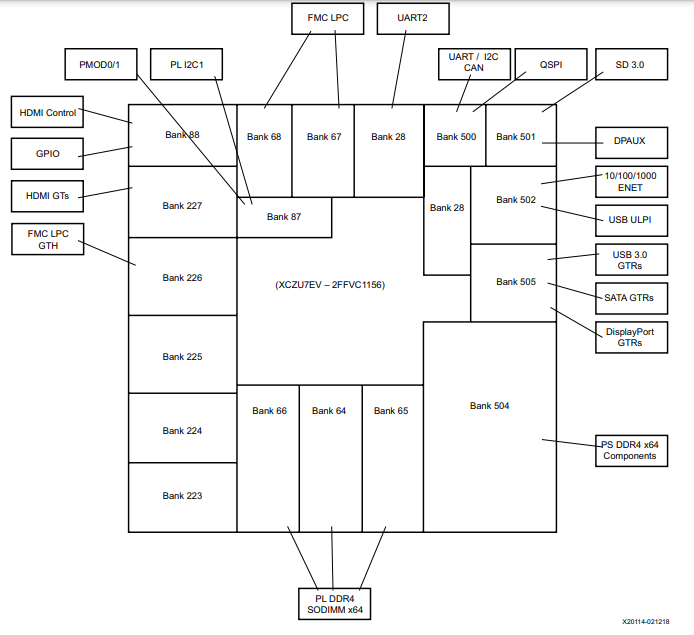Xilinx ZCU104: Overview, User Guide, Features and Application
Introduction
The ZCU104 evaluation board provides a flexible prototyping platform with a high-speed DDR4 memory interface, FMC expansion port, multi-gigabit per second serial transceiver, various peripheral interfaces, and FPGA fabric for custom designs. The ZCU104 reVISION software package provides an out-of-the-box SDSoC™ software development flow, including OpenCV libraries, machine learning frameworks, and real-time sensor support.
Table of Content
ZCU104 Overview
The ZCU104 Evaluation Kit allows designers to launch their concepts for embedded vision applications such as surveillance, Advanced Driver Assisted Systems (ADAS), machine vision, Augmented Reality (AR), drones, and medical imaging. This package includes a Zynq™ UltraScale+™ MPSoC EV chip with video codec and supports various peripherals and interfaces for embedded vision applications. The ZU7EV gadget features a quad-core ARM® Cortex™-A53 applications processor, dual-core Cortex-R5 real-time processor, Mali™-400 MP2 graphics processing unit, 4KP60 capable H.264/H.265 video codec, and 16nm FinFET+ programmable logic.
ZCU104 Block Diagram
Figure1-ZCU104 Block Diagram
ZCU104 Board Features
- Featuring the Zynq UltraScale+ XCZU7EV-2FFVC1156 MPSoC
Configuration
- USB-JTAG FT4232H
- Dual Quad-SPI flash memory
- MicroSD Card
Memory
- PS DDR4 64-bit Component
- Quad-SPI flash
- Micro SD card slot
Control & I/O
- 4x directional pushbuttons
- DIP switches
- PMBUS, clocks, and I2C bus switching
- USB2/3
Expansion Connectors
- FMC LPC (1x GTH)
- 3 PMOD connectors
- PL DDR4 SODIMM Connector – 64-bit
Communication & Networking
- USB-UART with FT4232H JTAG/3xUART Bridge
- RJ-45 Ethernet connector
- SATA (M.2) for SSD access
Display
- HDMI 2.0 video input and output (3x GTH)
- DisplayPort (2x GTR)
Clocking
- Programmable clocks, System clock, user clock
- Jitter attenuator
Power
- 12V wall adaptor or ATX
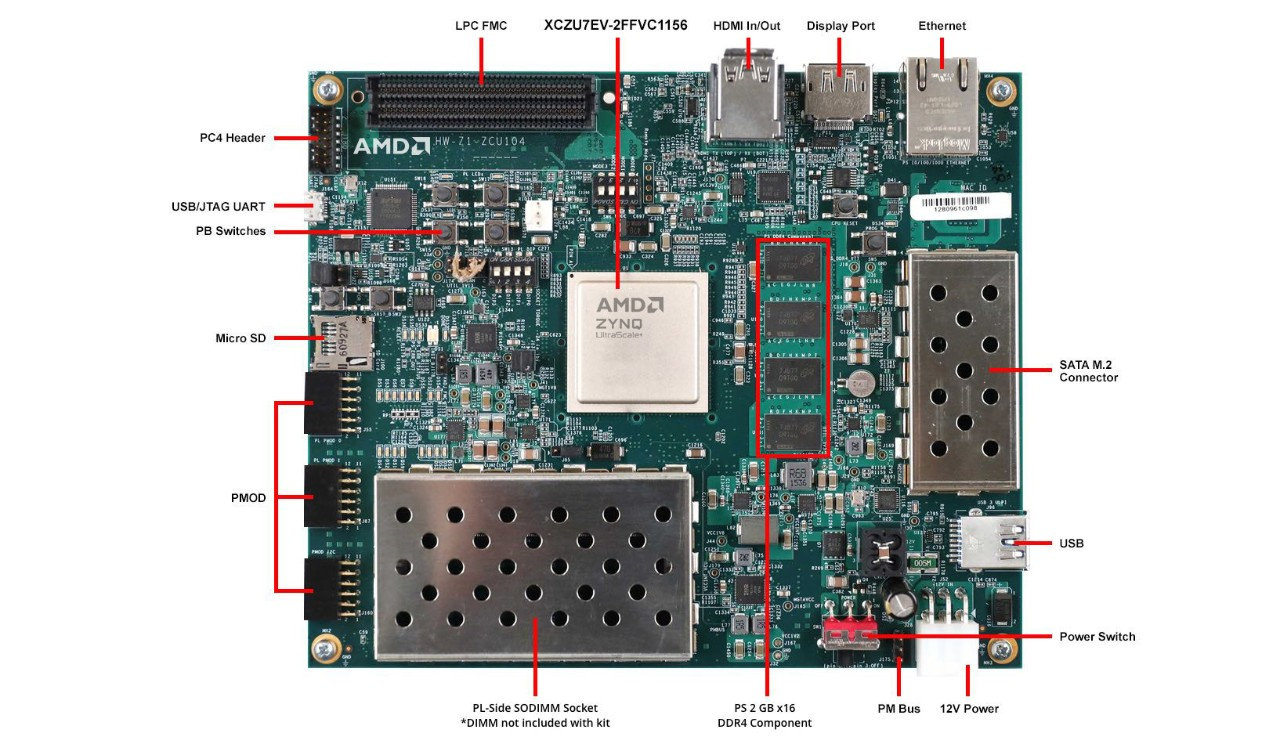
Figure2-ZCU104
ZCU104 Application Example
- A Smart Camera implemented in PetaLinux 2022.1 on ZCU104
This project builds a smart camera using a Raspberry Pi camera, ZCU104 board, and PetaLinux. This is accomplished by leveraging the Smartcam application originally designed for AMD Xilinx Kria SoMs. The Smartcam app version can take video input from a Raspberry Pi camera, a USB camera, or a file, and can output video to a DisplayPort monitor, a file, or Ethernet via the Live Transport Protocol.
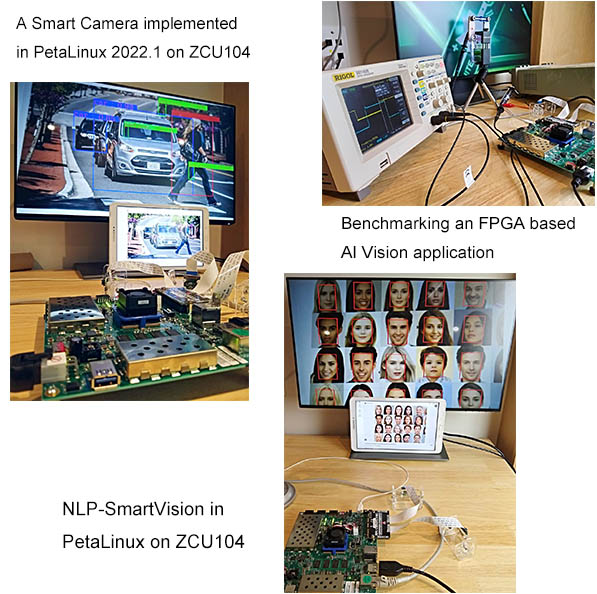
Figure3-ZCU104 Application
- Benchmarking an FPGA-based AI Vision application
Many smart vision applications require fast decisions: self-driving cars, drones, surveillance, and industrial robots are just a few examples. When developing such artificial intelligence vision systems, it is crucial to understand the factors that affect performance. In this project, we will explore two factors: operating system and camera type. We will measure and compare the performance of the NLP-SmartVision application on the ZCU104 board
- NLP-SmartVision in PetaLinux on ZCU104
ZCU104 User Guide
ZCU102 vs ZCU104 vs ZCU106
The primary drawback associated with the ZCU104 pertains to its limited high-speed connectivity options. In contrast, the ZCU102 boasts 16 GTH transceivers on the FMC ports, an additional four on SFP, and GTRs on the PCIe slot.
Furthermore, it is equipped with a larger Zynq chip, the ZU9EG, albeit lacking the inclusion of a video codec. Meanwhile, the ZCU106 features seven GTHs on FMC, two on SFP, four on PCIe, and one on SMA connectors. In stark contrast, the ZCU104 only incorporates a single GTH on FMC. It lacks any other general-purpose high-speed transceivers, limiting its utility to interfaces such as SATA, USB 3.0, DisplayPort, HDMI, etc.
For individuals seeking to establish high-speed connections with embedded hardware, especially with components like a high-speed camera sensor IC or other FPGAs, the ZCU104 proves unsuitable. The requisite interfaces are more adequately provided by alternative boards. Conversely, the ZCU104 excels in scenarios where a compact system is being designed, relying on SATA, USB 3.0, Ethernet, and HDMI/DisplayPort as its primary interfaces. In the context of hardware acceleration experimentation, disregarding the interfaces, the ZCU104 exhibits commendable performance; although, the option of integrating the ZCU106 into a PCIe slot also presents noteworthy advantages.
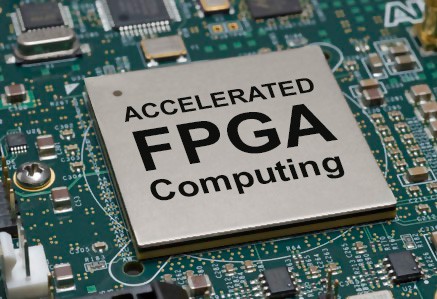 A Comprehensive Guide to Grasping FPGA Structure6/20/2024 694
A Comprehensive Guide to Grasping FPGA Structure6/20/2024 694FPGA (Field-Programmable Gate Array) is an integrated circuit, a type of programmable chip, that allows engineers to program custom digital logic. It can change its hardware logic based on the program, with the primary purpose of enabling engineers to redesign and reconfigure their chips faster and cheaper, whenever they want. However, nothing in the world is ideal, and FPGA chips also have limitations!
Read More >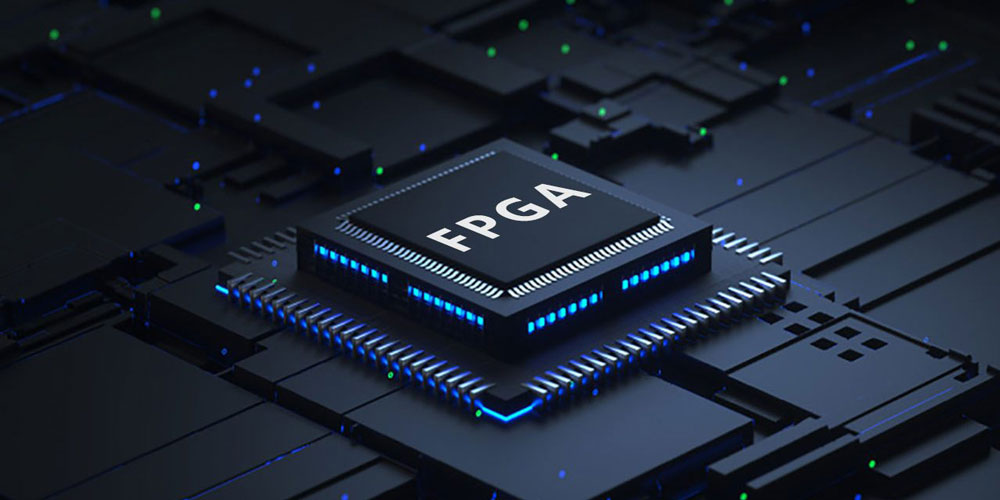 The EU to Impose Tariffs on Electric Vehicle Imports from China in Early July6/17/2024 348
The EU to Impose Tariffs on Electric Vehicle Imports from China in Early July6/17/2024 348The EU to Impose Tariffs on Electric Vehicle Imports from China in Early July
Read More > What is XC7A100T-2FG484I?6/6/2024 510
What is XC7A100T-2FG484I?6/6/2024 510XC7A100T-1CSG324C is an FPGA-based digital signal processing board, which consists of Xilinx's Virtex-7 series chips and FPGA interface chips.
Read More > Analog cycle inventory hits bottom, AI drives flash memory demand to continue6/4/2024 517
Analog cycle inventory hits bottom, AI drives flash memory demand to continue6/4/2024 517Analog cycle inventory hits bottom, AI drives flash memory demand to continue
Read More > Micron Plans to Build a Factory in Japan, NAND Flash Prices May Remain High5/31/2024 742
Micron Plans to Build a Factory in Japan, NAND Flash Prices May Remain High5/31/2024 742Micron Plans to Build a Factory in Japan, NAND Flash Prices May Remain High
Read More >
Hot News
- Electronic Component Symbols: Resistor, Capacitor, Transformers and Connectors
- Diode Overview: Application in Automotive Alternator Rectifiers
- Voltage-Controlled Oscillator: Principle, Type Selection, and Application
- Ultra-low power consumption of STM32U575/585 microcontrollers(MCU)
- What is Xilinx 7 Series FPGA Clock Structure- -Part two
- Basic Information about Temperature Sensor







